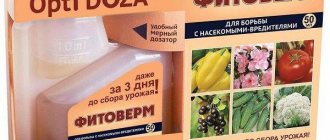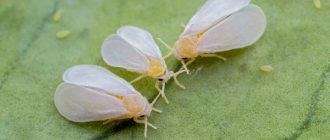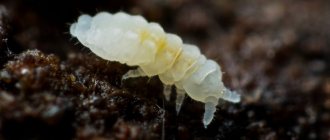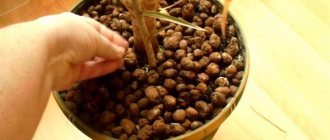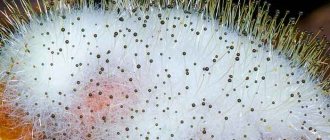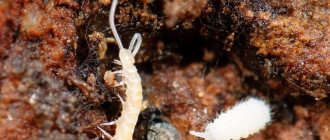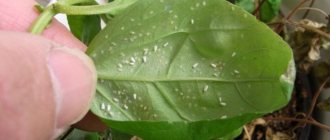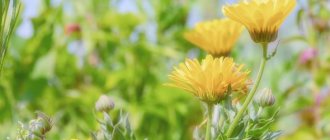How to deal with mealybugs on indoor plants?
Pests on indoor plants give us unpleasant emotions. And we want you to be joyful and cheerful - so look at our tips.
Experts recommend comprehensive control of mealybugs on indoor plants. If the flower is slightly damaged, it is not difficult to fight the pest and you can try using folk remedies, but if the damage is severe, it is better to use drugs.
In any case, to get rid of mealybugs you need to carefully follow the recommendations of specialists and experienced gardeners.
COMBAT MEASURES
- Remove affected leaves or shoots when the pest is detected. If trimming is not possible, then remove all the scale insects with a cotton swab dipped in soapy water.
- Move the affected plant to a separate place, and carefully inspect the rest. Wash the area near the affected flower (window sill, window, outer sides of pots) with soapy water and then with insecticide.
- Replace the top layer of substrate.
- Using a cotton swab, cloth or soft toothbrush, wash the plant with a solution of water and methyl alcohol (1:1), soap solution or tobacco infusion to wash away small mealybugs.
- Rinse off the solution and leave the plant to dry. After the water has evaporated from the leaves, spray the plant and top layer of soil with an insecticide or folk remedy.
- Cover the flower with a bag for 20-30 minutes and rinse it in the shower to wash off the drug and the dead mealybug. If you treated it with a systemic insecticide (Aktara, etc.), then there is no need to wash it off.
- In between treating the plant, wash it every day with water and clean it of parasites.
ADVIСE. Types of plants whose leaves cannot be washed must be sprayed, preferably with preparations.
If the root system is damaged by the pest, carefully wash the roots and trim off the damaged areas, and then transplant the plant into a new substrate.
Treating mealybugs is often a fairly long process that can take 6-12 months.
.
Mealybug close up
.
Reasons for appearance
The main reasons are:
- Presence of larvae or eggs in the soil . Moreover, it could even be a substrate from the store. Therefore, it is important to disinfect the soil before planting. To do this, place the soil in the microwave for a few minutes or put it in the freezer overnight.
- Moving mealybugs from a new plant . To prevent this from happening, always quarantine the newly arrived plant in a separate room and monitor its condition for about a month.
- Improper care:
- cold room;
- watering with untreated water or water of the wrong temperature (both too warm and too cold have a bad effect);
- poor ventilation of the room;
- overly active introduction of nutritional complexes.
Popular drugs
We present popular preparations for mealybugs and indicate the hazard (toxicity) class: 4 – low danger to humans, safe for bees and beneficial insects, 3 – moderately dangerous substance, 2 – highly dangerous substance, 1 – extremely dangerous for humans and animals.
We also indicate the active ingredient and approximate prices for the products in Russia.
- “Akarin” (old name “Agravertin”) – 4, (avertin), price: 4 ml package – 13-20 rubles.
- "Aktara" - 3, (thiamethoxam), price: 1.2 ml ampoule - 40-50 rubles, 4 g package - 90-120 rubles.
- "Actellik" - 2, (pirimiphos-methyl), price: 2 ml package - 30-50 rubles. In Russia, the drug for personal use is not registered as of October 1, 2016. Although sometimes the drug can still be found in small stores and on the Internet.
- “Bankol” - 3 (bensultap), price: 10 gram package - 30-40 rubles.
- “Vertimek” - 2, (abamectin), price: 90 dollars/liter, manual packaging - 2 ml - 25 rubles.
- “Inta-Vir” - 3, (cypermethrin), price: 8 g package - 10-15 rubles.
- “Karbofos” (“Malathion”, “Fufanon”) - 3, (malathion), price: 30 g package - 30-40 rubles (strong unpleasant odor).
- “Confidor Extra” - 3, (imidacloprid), price: 1 g package - 30-40 rubles.
- “Tanrek” - 3, (imidacloprid), price: 1 ml ampoule - 10-15 rubles.
- “Fitoverm” - 4, (aversectin C), price: package (ampoule) 4 ml - 15-20 rubles.
- Prices are based on hypermarkets such as “Obi”, “Leroy Merlin” according to the exchange rate of 1 dollar = 65 rubles. These drugs are widely found in many flower shops.
Which drug should I choose?
If the plant is severely infested, getting rid of the mealybug is not easy. You need to try and select an effective insecticide individually so that the pest does not have time to get used to the active substance.
Therefore, look for reliable preparations for mealybugs on indoor plants, which have received positive reviews and recommendations from specialists.
- The Flower Festival magazine recommends starting the fight against mealybugs with the drug Fitoverm, which is as safe as possible for humans and animals, or Aktara, a powerful systemic insecticide.
If these drugs are not found or their effectiveness has decreased, then use Inta-Vir or Tanrek/Confidor. All of these drugs can be alternated if necessary.
And in case of serious damage or weak effects of previous drugs, use “Actellik” or “Karbofos”, “Vertimek” as they are more toxic.
Karbofos, Vertimek and Actellik can only be used to treat indoor plants outdoors.
ATTENTION! Carefully read the instructions for use of any drug and follow the manufacturer's recommendations.
Now you know an effective remedy for mealybugs on indoor flowers, and we will take a closer look at some of them.
"Fitoverm" from mealybug
"Fitoverm" is a popular and effective remedy in the fight against mealybugs. In many situations, it helps well to get rid of pests on indoor plants.
We recommend that flower growers who want to use low-toxic preparations use it first.
"Fitoverm" is an insectoacaricide of biological origin with minimal danger to humans and domestic animals.
- To get rid of mealybugs, dissolve 2 ml of the drug in 200 ml of water and spray the indoor flower. Treatments are carried out every 5-8 days depending on the size and age of the home plant, as well as air temperature.
In most cases, 3-4 procedures are sufficient. Some gardeners treat mealybugs with Fitoverm every 5 days three times and completely destroy the pest.
A week after the last or next spraying with Fitoverm, the plant can be treated with Epin to support the indoor flower.
"Aktara" from mealybug
Aktara is a very powerful systemic insecticide that kills mealybugs in most cases.
An indoor flower is sprayed with an Aktara solution of 1 gram per 1.25 liters of water (enough for 25-30 plants) and the soil mixture is spilled - 1 gram per 10 liters of water.
The procedure must be carried out 2-4 times, every 10-12 days, depending on the air temperature. In most cases, after 2-3 procedures, it is possible to remove the mealybug.
After spraying the flower, there is no need to rinse off Aktaru. The waiting period when spraying is 1-24 hours, and when watering is 2-4 days.
By simultaneously spraying and watering the soil with Aktara, the active ingredient of the drug (thiamethoxam) kills mealybugs on home flowers.
"Confidor" from mealybug
To destroy mealybugs, you can use “Confidor”: dilute 1 gram of the drug in 500 ml of water (1 ml per 2.5 liters of water) and spray the plant with the top layer of soil.
According to reviews from flower growers, the mealybug dies after 3-4 hours, and the product does not harm the plants. Additionally, it is better to water the soil with a solution that is twice as weak.
Drug for severe damage: “Actellik”
Dilute an ampoule (2 ml) in a liter of water and spray when the mealybug appears. No more than 2-3 treatments in a row. The waiting period is 3 days.
IMPORTANT! Actellik can only be used outdoors. Pregnant women, people suffering from asthma and allergic diseases should not use it.
Drug treatment plan
- Treat the plant with insecticides 3-4 times every 7-8 days at an average daily temperature of 22-24°, and when the temperature is higher (25-28°), then after 5-6 days. At an average temperature of 15-20° - 8-10 days, and if below 15° - 10-12 days.
- If the air temperature at the time of treatment is below 18°, then the effectiveness of preparations against mealybugs is significantly reduced and there is little point in spraying indoor plants.
- After spraying, there is no need to put a transparent plastic bag on the plant; it is much more important to re-treat it at the right time.
- A single treatment with any drug will give an immediate effect - therefore, you need to fight the mealybug systemically.
IMPORTANT! If a mealybug is detected, it is advisable to treat all indoor plants; if you treat only part of the home collection, then there is a high risk of the pest being detected again.
ADVIСE. These control measures are also suitable for the control of false scale and scale insects.
How to properly treat plants with drugs?
- Personal protection measures (skin, respiratory organs) when working with chemical preparations against mealybugs. After the procedure, wash your hands and face with soap, and rinse your throat and nose with water.
- Treat indoor flowers only when they are dry.
- The best processing time is before 12.00. On a cloudy day, until 14.00. During and after spraying, until the plant dries, direct sunlight should not fall on it.
- The optimal temperature is 20-26 degrees Celsius.
- The place for treating a flower with drugs of the 3rd and 4th hazard classes can be a balcony or a bathroom, and drugs of the 2nd class can only be used outdoors.
- To maximize the effect of spraying with the product, it is recommended to add liquid potassium soap to the solution.
- Be sure to ventilate the room well after using medications.
IMPORTANT! Carefully read the instructions for the drug - consumption rates may differ from those given above, since they are often produced in liquid and dry form, in different concentrations of active ingredients or package sizes.
Processing rules
All parts of the plant must be treated
The use of this drug against parasites on orchids is simple; step-by-step instructions will help you carry out the treatment procedure correctly:
- To irrigate the above-ground part, it is recommended to use a special fine sprayer that sprays the liquid efficiently and evenly. It is necessary to capture all the organs of the plant - peduncles, leaves on both sides, pseudobulbs, roots.
- You can use it at any time of the day, its effectiveness does not decrease.
- Some gardeners prefer to process flowers by immersion in a pre-prepared solution.
- Repeated treatment is carried out after 2-3 weeks, or after 7 days, but with a different insecticide. Additional irrigation or watering with this medicine is extremely rarely required, since it has a strong effect and copes with pests the first time.
Spraying in residential areas is prohibited, as it is a toxic substance that can cause poisoning in humans and pets.
Tick and flea repellent
Flea and tick repellents with the active ingredient imidacloprid (finpronil, cypermethrin) effectively help get rid of mealybugs on indoor plants. For example, drops - “Advantix” (550 rubles), “Avanpost” (250 rubles).
After 1, 2, 3 points from the general instructions.
- Mix the drops with water: a small pipette in 500 ml, and a large pipette in a liter of warm water.
- Moisten the leaves, axils, petioles and stem of the plant, as well as the top layer of the substrate, with this emulsion on both sides.
- After the solution has dried, ventilate the room. The solution does not need to be washed off, and if the odor is strong, it can be washed off every other day with water.
As a rule, one procedure is enough; if necessary, repeat after a week.
If you cannot re-process the plant, then you can cover the pot with the plant with a bag (garbage) and leave a gap. Spray the plant with Bolfo aerosol (400 rubles) for 3-4 seconds, tie the bag and leave the flower for 24 hours - the mealybug will suffocate.
IMPORTANT! Carry out all procedures only in the open air or on the balcony!
- The drugs "Tanrek" and "Confidor" contain a similar active ingredient, so you can safely use them.
Life cycle
Insect activity begins in May. By this time, the necessary food for the pest has already appeared - the leaves have blossomed, buds have formed. After copulation, the males die and the females lay 200 to 800 eggs in white cotton wool. Caring mothers hide cocoons in hard-to-reach places: in the axils of leaves, between shoots, in cracks in the bark, in depressions in the ground or near the roots. The walls of the sac are strong, protecting future offspring from moisture. After laying eggs, the females also die.
Oviparous species do not go through the ovulation stage. The larvae emerge from the eggs after a few hours, days or months. The first stage larvae are “vagrants”, small in size, but moving quickly, as they have 3 pairs of legs. The larvae lack a protective waxy layer and are sensitive to adverse environmental conditions and chemicals. Therefore, they try to find a comfortable and safe place. Within 1-3 days, they settle in a suitable place and begin to suck juices from the above-ground parts and roots.
From this moment on, the larvae become motionless. In rare cases, they may change location. Only when they run out of food, are pressed by competitors, or some individual begins to fight with them, do they have to hide.
The duration of the larval stage depends on the surrounding climate. The larvae pupate several times before becoming adults. After 2 broods, males appear, after 3 broods, females appear. During the year, only 1 generation of the pest occurs outdoors, and in closed areas, powdery mildew multiplies 4-5 times.
How to get rid of mealybugs using folk remedies?
Experts have different views on folk remedies in the fight against mealybugs. Many gardeners complain that folk remedies are extremely ineffective and, moreover, can harm the plant.
The editors of the Flower Festival magazine believe that folk remedies for mealybugs can be used in certain situations, since they are safer for humans and animals.
If the degree of damage to the flower is small and there are not many pests, then it is better to start treatment with folk remedies. And also if this is a plant that can be sacrificed, but there is no desire to buy insecticides because of it.
In any case, the use of folk remedies for mealybugs on indoor plants is the personal choice of each gardener, but systemic insecticides are more effective.
1. Soap solution
To prepare a soap solution, household, tar or green potassium soap is suitable, and, in extreme cases, dishwashing detergent is suitable.
It is necessary to treat the entire house plant with a soap solution, as well as the window sill, window frame, pot and pot tray. The more foam in the process, the better.
After wiping the flower, it is better to wash off the soap suds after 2-4 hours.
RECIPE. Pour a tablespoon of soap shavings into a glass of warm water. To enhance the effect, you can add a teaspoon of ammonia (technical, medical, or, in extreme cases, vodka) and 300 grams of water.
The soap-alcohol solution must be washed off after 10-15 minutes with warm water so as not to burn your home flower.
IMPORTANT! Some experts insist that using soap solution on indoor flowers is not permissible. In their opinion, soap blocks the stomata of the plant, which leads to disruption of photosynthesis and plant development.
Plants with delicate leaves should not be treated with alcohol.
2. Garlic
Garlic infusion is a popular folk remedy in the fight against various pests.
Pour a glass of water over five crushed cloves (a teaspoon of pulp) of garlic. Infuse the mixture in a tightly sealed container for 1-2 days, and then wash the plant every 7-8 days. To spray, strain the infusion through three layers of gauze.
Recipe No. 2. A teaspoon of garlic pulp (4-5 cloves crushed) is poured into 500 ml of boiling water and left for 4-5 hours. The infusion is filtered and the affected flower is wiped.
3. Onion
A medium-sized onion is finely chopped, mashed and poured with a glass of water for 2-3 hours. Then everything is the same as with garlic.
ONION PEEKS. To prepare the infusion, pour 20 grams of husk with a liter of warm water and leave for 13-16 hours. The resulting infusion is sprayed on indoor flowers; usually 2-3 procedures are enough to remove aphids.
4. Pepper infusion
Infusion of red hot pepper: boil 20-30 grams of crushed (finely chopped) pepper in 200 ml of water for 60 minutes. Then leave the resulting liquid for 24 hours and strain. To spray, dilute 10 ml of infusion in a liter of water.
You can treat plants with pepper infusion once every two weeks. Pepper tincture can be stored for a long time in its finished form, which allows it to be used very quickly.
5. Oil
Beat 5-10 grams of soap in a glass of water until foam appears, add 15-20 ml of machine oil (2 tablespoons of olive or sunflower). The plant is washed completely with a soap-oil emulsion and left for 6-10 hours, and then washed off.
Carry out 2-3 procedures every 7-10 days. Before treating the plant, cover the soil mixture in the pot with film! Treatment with a water-oil emulsion is not recommended for plants with pubescent, delicate or very thin leaves.
6. Kerosene
In a liter of water, stir 40 grams of household soap (25 grams of green potassium soap) and add five drops of kerosene, and then shake the solution well. The mixture can be wiped or sprayed on the affected areas of the plant.
7. Tobacco
Pour 80 grams of dry tobacco (shag) with a liter of water and leave for 24 hours, then strain and dilute with a liter of water. Then rinse and spray the plant.
8. Calendula
Use a swab dipped in calendula tincture to wipe the affected areas every evening for 3-4 days in a row.
BIOLOGICAL METHOD
To combat mealybugs, some use fungal and bacterial preparations (microbiological), for example, Lepodocid.
Important Tips
Remember that during the treatment of infected specimens, you must be careful about watering them. Excessive waterlogging of the substrate can lead to rotting of the rhizome, and since the plants are already weakened, this outcome is observed in most cases. If parasites have settled in the soil and damaged the roots, then with abundant watering, a secondary infection may well penetrate through these wounds.
To protect your green “pets” from mealybugs, you need to regularly inspect them, especially in the off-season, when the central heating starts working. During this period, it is important to observe how the plant develops and whether white lumps appear on its leaves and stems.
Among indoor plants, the most susceptible to mealybug infestation are:
Take care of indoor plants, keep them clean, from time to time wipe the shelf or window sill on which they are located with a soap solution and remove fallen leaves in a timely manner. These simple recommendations will help protect potted flowers from attacks by mealybugs and other pests.
Pest prevention at home
The best remedy for mealybugs on houseplants is to regularly inspect your pets: especially carefully inspect the leaf axils, stem, and the inside and outside of the leaves.
At home, the pest is suppressed by ventilating the room, spraying and washing the leaves of plants, since the mealybug loves dry air and is afraid of moisture.
Avoid the situations described in the “Where Mealybugs Come From” section of the companion article.
ADDENDUM TO THE ARTICLE:
1. Mealybug - SIGNS OF DEFEAT, WHERE DOES IT COME FROM AND DESCRIPTION + PHOTO!
2. PESTS OF HOUSE PLANTS: PHOTO!
The review of the pest has come to an end. We hope that now you can fight mealybugs on indoor plants using drugs (insecticides) or folk remedies more effectively.
And the main thing is to be able to get rid of mealybugs and enjoy your favorite plants!
Systemic insecticide, also has an intestinal contact effect. Active ingredient: thiamethoxam, at a concentration of 250 g/kg and 240 g/l. Manufacturer: Syngenta Crop Protection AG, Switzerland. Available in the form of water-dispersible 1% granules, 25-35% suspension concentrate. Analogs and synonyms: Aktara, VDG; Aktara, KS; Doctor, TB; Adamant, gel; Cruiser, KS; Tiara, KS; Ephoria, KS, etc.
Used to protect garden crops and indoor plants from a wide range of pests (thrips, scale insects, scale insects, Colorado potato beetles, aphids, etc.), not effective against mites, ineffective against whiteflies!
Precautionary measures
Since Aktara belongs to chemical hazard class 3 (moderately hazardous substances), the following recommendations and safety requirements must be observed when working with it:
- do not use food containers for preparing working solutions;
- wear clothes made of thick fabrics and use personal protective equipment (gloves, goggles, respirator) when preparing for processing and directly during it;
- do not eat, drink or smoke while processing plants;
- when working with insecticide outdoors, take into account the direction of the wind (do not spray the working solution against the wind);
- if toxic liquid gets into your eyes or skin, it must be washed off immediately with plenty of running water;
- in case of insecticide poisoning, you should immediately consult a doctor;
- It is prohibited to use Aktara for orchids and other plants if the drug has expired (it is 4 years from the date of manufacture).
Aktara, like many other preparations for mealybugs and other pests, should be stored in a dry, dark place where children and animals do not have access. Food and medicine should not be placed near chemicals.
Instructions for use
Aktara belongs to the chemical class of neonicotinoids, acting on the nicotinic acetylcholine receptors of the insect nervous system. The active substance, thiamethoxam, penetrates mainly into the leaves through the vascular system, but practically does not enter the fruits. At the same time, the drug is completely redistributed throughout the leaf tissues of the plant 20 hours after watering. When watering large plants with actara, after 1 - 3 days the solution reaches the upper stems and shoots. Aktara is resistant to sunlight and does not reduce its effectiveness in dry air or rainy weather. The period of protective action is 14 - 28 days when sprayed on the leaf, 40 - 60 days when applied in soil.
There is a possibility of resistance arising (research has proven that pests become accustomed to repeated treatments), in particular, repeated outbreaks of damage by scale insects and whiteflies occur. This is also explained by the fact that actara acts on the larvae, i.e. Only at the feeding stage, if the root ball is not evenly moistened, the larvae hatched from the eggs can remain in the ground. And with each watering, the soil gets rid of traces of the insecticide. To prevent resistance, it is recommended to alternate actara with insecticides from other chemical groups. Aktara is compatible with most insecticides, fungicides, and growth regulators (Zircon, Epin, Amulet), except for drugs in which the solution has an alkaline reaction (Bordeaux mixture, soap, lime).
Analogs
The drug can be used for prevention
According to the stated characteristics of the manufacturer, this drug has no analogues that could replace it in terms of quality and effectiveness.
Nevertheless, there are several similar drugs, the active components of which destroy orchid pests.
Tiara
The composition includes the active substance - thiamethoxam, but the effect of this drug is not similar to the medicinal properties of Aktara.
Price - 3200 rub. for 1 l.
Cruiser
It has long-lasting protective properties and is more suitable for treating seeds and soil-based plants. When irrigating orchids, it instantly penetrates into the cells of all organs. It affects the nervous system of parasites that love to feast on the juice of flowers.
The cost for one 5 liter bottle is 2500 rubles.
Consumption rates
Prepare a solution in warm water (the granules dissolve at a temperature not lower than 25°C), at the rate of 8 g of the drug per 10 liters of water - for watering the soil in pots (or soil in the garden) against aphids, whiteflies, thrips, scale insects and false scale insects, mealy mealybug and root mealybug. The consumption rate of working fluid is 10 liters per 10 m² (approximately 200-250 pots).
To use actara on indoor plants against most pests, simultaneous spraying and watering with actara solution are carried out. At the same time, for spraying, 1 sachet of actara, weighing 4 g, must be dissolved in 5 liters of water, this is enough to spray a whole greenhouse, so it is advisable to dilute 1 g per 1.25 liters of water. The easiest way is to pour the actara onto a white sheet of paper and divide it into four piles by eye - each will contain approximately 1 g. Pack the powder, 1 g, into separate bags and use as needed, dissolving in 1 liter of warm water.
If you use actara against weak pests: soil bugs (podura, collembola, enchytrea) or fungus gnats, it is enough to dilute 1 g of actara per 10 liters of water for irrigation.
How to breed aktar for garden plants and vegetables
- Tomatoes in open ground and greenhouses from aphids, whiteflies, Colorado beetles - for watering at the root 4 g of aktara per 10 liters of water, for spraying 1.2 g per 10 liters of water.
- Cucumbers against aphids, tobacco thrips, whiteflies - for watering at the root 8 g of aktara per 10 liters of water, for spraying 2-4 g per 10 liters of water.
- Eggplants and peppers from aphids, tobacco thrips, rose thrips - for watering at the root 4-8 g of aktara per 10 liters of water, for spraying 2-4 g per 10 liters of water.
- Onions for onion flies and thrips - for spraying 4 g per 10 liters of water.
- For apple trees, against the honeydew moth, you need to dilute 3 g of aktara per 10 liters of water for spraying. Pears - 4 g per 10 liters of water.
- Cabbage from flies and flea beetles, watering the seedlings with 3 g of actara per 10 liters of water.
- Spray roses against thrips with actara solution, norm: 16 g per 10 liters of water! For aphids, 4 g per 10 liters of water is enough.
- Grapes against leafhoppers and other pests: 3 g of aktar per 10 liters of water.
- Potatoes against the Colorado potato beetle: 1.2 g per 10 liters of water.
- Currants against aphids: 2 g of aktar per 10 liters of water.
For other garden plants, berry bushes and vegetables, the application rates for spraying and watering are the same: 4-8 g per 10 liters of water.
List of orchid pests sensitive to Aktara
One of the advantages of Aktara is its wide spectrum of action and effectiveness against a large number of insects that are dangerous to orchids and other plants. According to the manufacturer’s official regulations, the insecticide can be used to protect flowers from the following pests:
- soil flies;
- thrips;
- whiteflies;
- aphids;
- fungus gnats;
- scale insects and false scale insects.
In fact, the list of pests sensitive to Aktara components is much wider. Thus, flower growers successfully use the insecticide in the fight against mealybugs, insects that are especially dangerous for orchids.
Aktara has no effect on representatives of the Ticks squad. When orchids are infected with spider mites, the plants should be treated with a suitable insectoacaricidal preparation.
Aktara liquid
Liquid Aktara for the Colorado potato beetle is available in 9 ml bottles or 1.2 ml ampoules. This is a suspension with a concentration of the active substance thiamethoxam of 240 g/l.
Despite the fact that the Colorado potato beetle is depicted on the packaging and is mentioned in the title, liquid actara destroys all pests except mites: aphids, thrips, whiteflies, scale insects, scale insects, false scale insects, poduras, fungus gnats, codling moths, copperheads, etc. The consumption rates are as follows the same as actara in granules.
Since liquid actara is available in 1.2 ml packaging, it is easier to count using a syringe. For example, for currants, dilute the entire ampoule (1.2 ml) in 6 liters of water, for onion flies - 1.2 ml in 3 liters of water, and to cure roses from thrips with actara, you need to dilute 1.2 ml in 750 ml of water.
Aktara reviews
In general, Aktara is very popular among flower growers, gardeners and gardeners. Almost alone, it holds the palm among insecticides. Firstly, the drug does not have a pungent odor, like all others. Secondly, because the drug is systemic - it spreads from the juices throughout the plant and destroys the pest if you simply water it, i.e. Spraying is not necessary, although it is advisable. The fact is that mealybugs, and these include mealybugs, rootbugs and scale insects, are very tenacious (they are protected by a shield or a wax coating). And when sprayed, actara cannot always penetrate deeply into the lower layers of the epidermis.
Therefore, one spraying is not enough against this group of pests, especially on plants with dense, leathery leaves or fruits. Here, only simultaneous spraying and watering with actara is effective. In this case, the treatment must be repeated after 10-12 days.
Attention: Rosselkhoznadzor warns about fake aktar.
Toxicity
Aktara has a hazard class - 2 or 3 (hazardous substance, the class depends on the concentration), hazard class 1 for bees (border protection zone for bees 4-5 km). Thiamethoxam is slightly toxic to birds, fish, earthworms and aquatic organisms. Not phytotoxic.
Waiting time - the time after treatment before harvesting is 14–21 days when spraying any crops and 40–60 days when watering the soil.
Characteristic
Mealybugs are pests of ornamental crops that feed on plant juices. They have an oval body covered with a whitish, waxy coating, which can form a dense, uniform layer or be located in separate teeth. Depending on the species, the body of the parasite will be pinkish or grayish. The size of an adult can also vary - from 3 to 7 mm.
The mealybug gets its name from a substance that the pest produces itself. Initially, it is a sticky mass, which after some time becomes covered with a whitish fungus. Outwardly, it looks like a small ball of cotton wool, under which the parasite or its clutch is usually found. If you do not figure out in time how to remove mealybugs and do not start treating the plants, then over time the plaque will spread throughout the stem and foliage, which will seriously interfere with gas exchange and may lead to the death of the flower.



